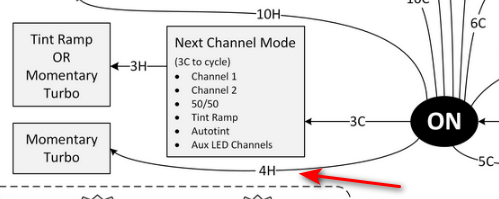Hi, multi-channel Emisar D2 user here, Model number 0135, emisar-2ch, using ToyKeeper's latest Anduril 2 version, anduril.2023-08-07.emisar-2ch.hex: At my end, momentary turbo 3H/4H works just fine and as expected, so I do not have the same behavior.
4H from ON for momentary turbo works with every channel mode, whether there is tint ramping or not, and 3H from ON for momentary turbo works when there is no tint ramping with the selected channel mode; all exactly as displayed in the diagram.
